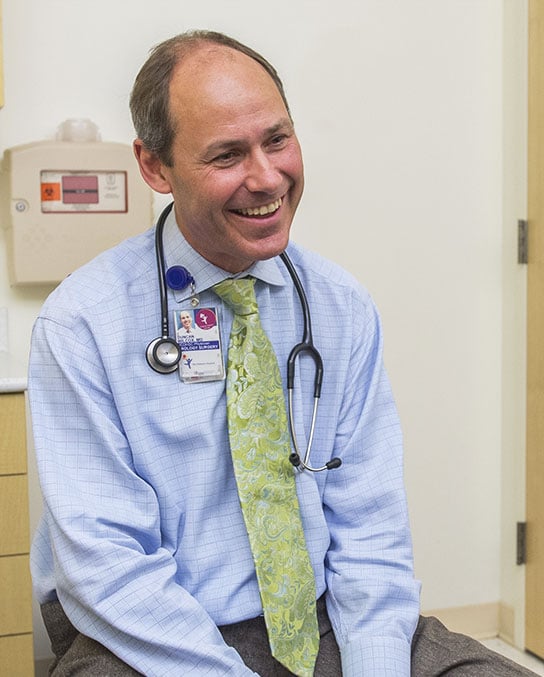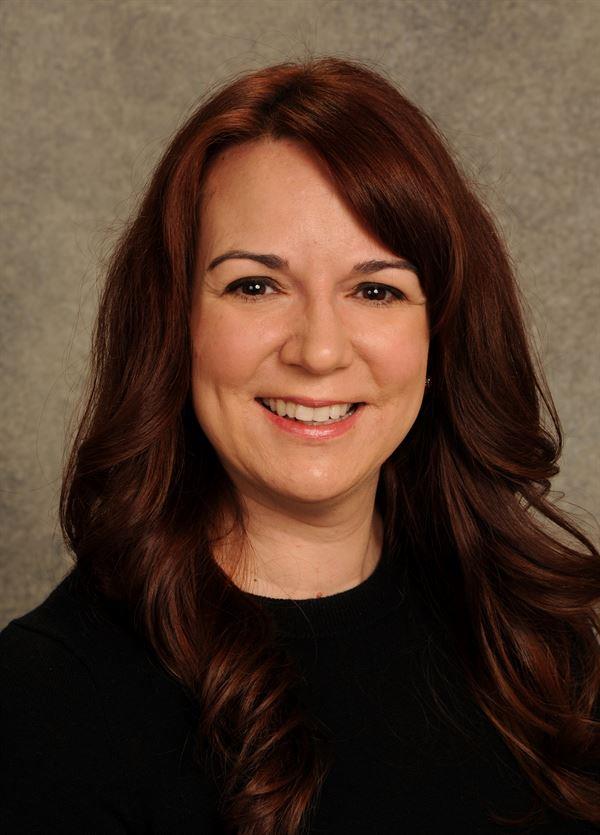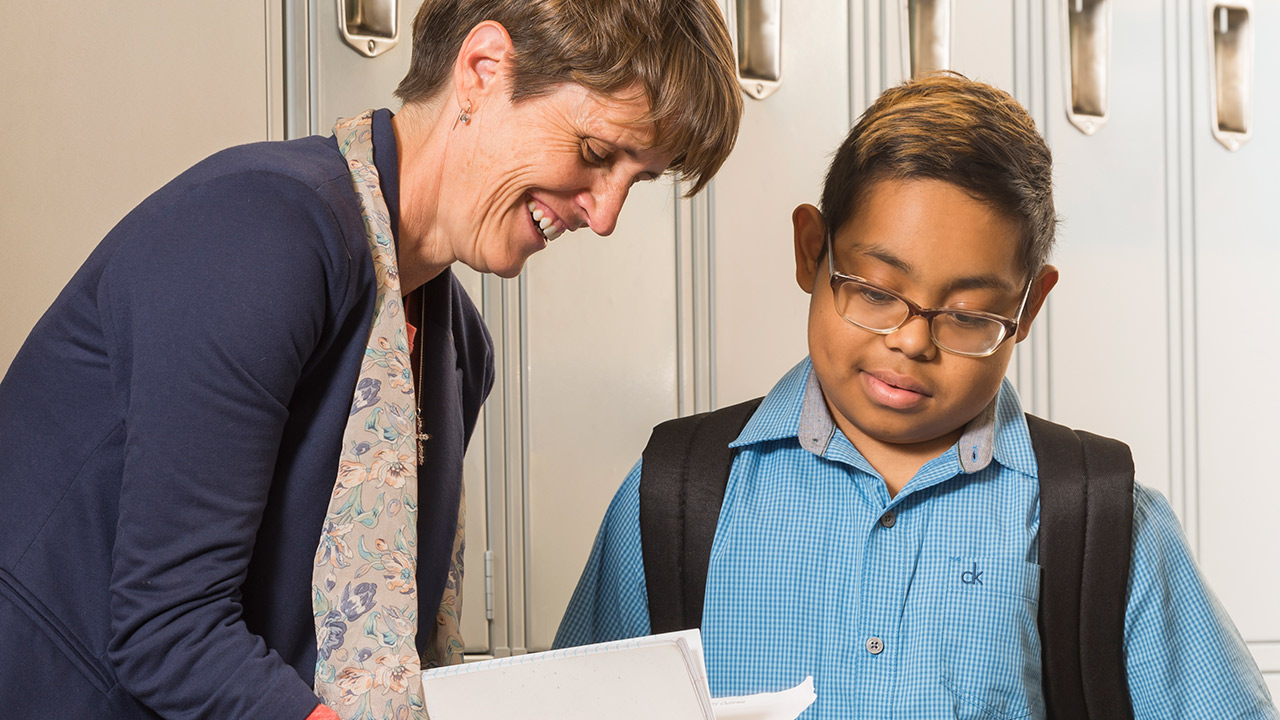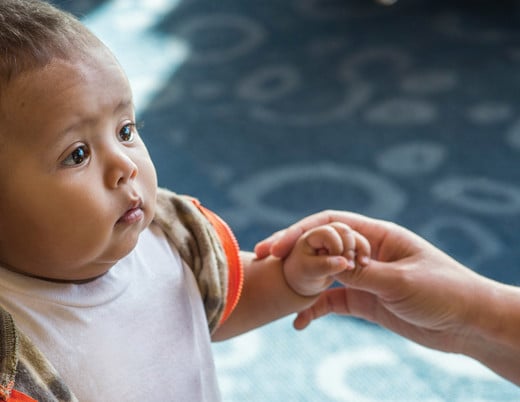Adrian Francisco had his first kidney transplant at age 4.
He was born small and premature. His kidneys and bladder never fully developed. At age 2, he started at-home dialysis, but after an infection that scarred his peritoneum, he had to switch to hemodialysis at the hospital. He and his mother, Alicia, made the three-hour round trip from their home in Fort Morgan, Colorado, to Denver three times a week. Then four.
"Thank God for my parents and my sister," she says. "I don't know how I would have been able to do it without their help."
When a kidney finally came, Alicia was overjoyed. The transplant took place at Children's Hospital Colorado. Pediatric urologist Duncan Wilcox, MD, assisted, enlarging Adrian's atrophied bladder and creating a Mitrofanoff valve using Adrian's appendix, so Adrian could self-catheterize through his navel. The bladder, his team speculated, would grow as Adrian produced urine and grew.
But that kidney would never produce urine. Complications effectively destroyed the new organ. He had it two days.
"My mind just went blank," Alicia recalls. "I couldn't believe it."
Adrian's doctors and nurses did their best to reassure her. They'd give it some time, let Adrian heal and then they'd get him back on the waitlist for another transplant. He'd wait another 10 years.
The drawbacks of pediatric dialysis
Dialysis does what impaired kidneys can't: It filters toxins from the blood. But no machine can do it constantly, and none nearly as well as the body's own system. Adrian's team at Children's Colorado — nephrologists Jens Goebel, MD, Margaret Bock, MD, and Melisha Hanna, MD — knew it all too well.
"Kids' bodies are so much more dynamic than adults' — long-term dialysis stunts everything," says Dr. Bock. "Nobody thinks it's a good idea to dialyze kids for a long time."
"The life expectancy of children on long-term dialysis is worse than the life expectancy of children with cancer," adds Dr. Goebel.
Over time, blood toxins weaken the heart, impair neurological development, corrode the bones. Adrian would accumulate so much fluid between dialysis treatments that Dr. Hanna feared his compromised heart wouldn't tolerate the volume of removal. She had to ask Alicia to bring him in four times a week. Then five.
Ten years battling kidney and immune dysfunction
Meanwhile, the failure of Adrian's first transplant had triggered an immune reaction severe enough to make future transplantation difficult, verging on impossible.
"We'd get calls like, 'We think there's a kidney for him,' and then they'd go, 'No, it's not a match,'" recalls Alicia. "It was so hard and stressful. I'd think, 'Is it just going to be like this forever? Is it going to get worse?'"
Years went by. Alicia had another son, Luis. As he grew, Alicia's parents and sister went to Luis' school functions and games while Alicia sat in the dialysis center, waiting. She met other kidney families, other kids. One by one, she watched them come, watched them get transplants, watched them go.
"When you think about all that time, from age 4 to 14, what a childhood is supposed to be, and what kind of childhood he had," says Dr. Goebel. "It's hard to imagine."
By age 14, Adrian was just a couple of inches taller than his 8-year-old brother. Dialysis gave him enough time to attend school just once a week. The toxins in his blood and the physical stress of dialysis exhausted him. He spent most of his time asleep.
Meanwhile, access to his blood was becoming a challenge. Ports scarred up and became unusable. Even dialysis wouldn't be possible much longer.
A kidney donor's story
A notice in her church bulletin caught Jaime Bailey's attention: Two fellow members, neither of whom she knew, needed kidney donations. She saw it again the next week, and again the week after.
"I thought, 'Why is nobody donating a kidney?'" she recalls. "Then one week the homily was about how everyone has gifts to give, and I thought, 'Well, maybe I'm the one who's supposed to do it.'"
A week later, she began a battery of tests and evaluations required of every live donor at the University of Colorado Hospital (UCH). She wasn't a match for either of the people at her church, as it turned out. But, the hospital asked, would she be interested in anonymously donating to someone else — perhaps a child or teen at Children's Colorado, which shared the same campus?
Jaime had some experience with Children's Colorado. As a young girl in the late 1960s, she'd had trouble in school and had come to the hospital to undergo evaluation for a learning disability. Years later, working on a master's degree in special education, she wrote to the hospital to get those test results. The portrait they painted of her younger self — lacking confidence, her self-worth bruised — moved her.
"It fueled my passion to be an educator and an advocate," she says. "For all children, but especially for kids who learn differently from traditional schooling."
Jaime had given her life and career to kids. The idea that she could give an actual, physical part of herself, too — it made sense. She felt, again, that sense of providence: "This is where I'm supposed to be. This is what I'm supposed to do."
Desensitization for a second kidney transplant
Cross-matching combines an intended transplant recipient's blood with an intended donor's blood to see how the recipient's antibodies will react. For the transplant to work, the crossmatch must be negative.
Adrian and Jaime's crossmatch was positive.
"But in the 21st century, a positive crossmatch can be quantified," says Dr. Goebel. "It might be close enough to make it work."
For last-hope cases like Adrian's, Drs. Goebel and Bock were working to refine a rarely used, somewhat controversial process called desensitization. The process acclimates a recipient's system to a donor's tissue, essentially by killing off the immune agents that would attack it. The first step is to filter them out of the blood by a process called plasmapheresis.
"So the question is, how many plasmapheresis sessions do you need to get a negative crossmatch?" says Dr. Bock. "Normally you'd do about five to eight of them. We came up with eight. We were nervous."
"They flat-out told me, 'This might not work,'" recalls Jaime. "I think that made me want to do it even more."
Knowing Adrian's system would naturally produce more antibody agents as they filtered them out, Drs. Goebel and Bock finished the job with a leukemia drug called alemtuzumab, which would temporarily wipe out Adrian's immune system almost entirely. In the short term, it would put him at high risk for infection. But with an immunological clean slate, they hoped, Adrian's system would rebuild and possibly even come to recognize the foreign kidney as its own.
"It was either that or nothing," says Dr. Bock.
Coordinating transplant surgery across hospitals
The effort required a huge team. They worked with adult nephrologists, pathologists, hematologists, immunologists, anesthesiologists and surgeons at UCH, as well as a corresponding pediatric team at Children's Colorado. They worked with cardiologists, urologists and neurologists. Dr. Bock speculates about a hundred specialists were involved.
"That Friday before the transplant, we got the first test back that was completely clean, showing no antibodies," Dr. Goebel recalls. "That was one of the highlights of my career."
The next Wednesday, University of Colorado Hospital surgeon Trevor Nydam, MD, took out Jaime's left kidney. His team flushed it, put it on ice and walked it down the block to Children's Colorado, where Adrian was ready for it.
"I think the fact that a donor could come to a hospital, and that hospital could identify a person in need at a different hospital says a huge amount about our relationship with Children's Colorado," says Alex Wiseman, MD, Medical Director of the Kidney Transplant Program at UCH, who oversaw Jaime's medical evaluation. "The enthusiasm to make it successful was impressive."
A second transplant surgery, a second chance
Michael Wachs, MD, Surgical Director of the Liver and Kidney Transplant Program at Children's Colorado, performed Adrian's operation. Within a minute of connecting the blood supply, the limp, white organ pulsed red and spurted urine.
Again, Dr. Wilcox assisted. His job would be difficult. Because Adrian's 14-year-old bladder had essentially never been used, it held about 20 mL of urine. A healthy bladder holds about 300. The muscle had become brittle and thick, and suturing it to the ureter — the tube that drains urine from the kidney — would require a delicate hand. Dr. Wilcox didn't know going in what the Mitrofanoff valve he'd constructed 10 years earlier would look like.
"Amazingly, it was still fine," he says. "In fact, just recently we've taken the catheter out so that, during the day, he's urinating as normal."
For a 14-year-old boy who has essentially never urinated, that's an incredible success.
A kidney donor keeps giving
The day after Adrian's operation, Dr. Goebel walked over to thank Jaime, who was at UCH recovering. She didn't know to whom her kidney had gone, and Adrian didn't know whom his kidney had come from. But he wanted to meet her. She wanted to meet him too.
Because of patient privacy safeguards, it took a couple of weeks to arrange the meeting. Dr. Goebel stayed in touch. He told Jaime about Adrian: He'd never attended school full-time. He'd never even eaten chocolate. And while the damage of years of dialysis had been halted, it would not easily be undone. He would face tough challenges — educational ones among them. Dr. Goebel knew that was Jaime's area of expertise.
"He asked me, 'How do you feel about being more involved?'" she recalls. "I just started crying. I said, 'You don't understand how important this is to me. Yes, I'm in. I'm all the way in.""
A new run at life
Jaime met Adrian and Alicia a week later, and they immediately hit it off. Jaime and Alicia talked nonstop for more than two hours. Adrian was a little more reserved at first, but he eventually opened up. She gave him a Chromebook to help with his schoolwork.
"He actually texted me the other night," she says. "He's doing incredibly well — he's talking about wanting to move into a harder algebra class, which floors me."
As a high school freshman, Adrian is attending full-time school for the first time. He has an educational plan, and he, Alicia and Jaime meet with his assistant principal and school nurse to assess his progress once a month. He plays soccer. He's made lots of friends.
"I have so much energy," he says. "I feel great every day."
"That's what he told one of the nurse coordinators right after he came out of surgery: 'I feel so good, I feel like going for a run,'" Dr. Bock recalls. She laughs. "He'd probably never gone for a run in his entire life."
Featured Researchers

Duncan Wilcox, MD
Surgeon-in-Chief
Pediatric Urology
Children's Hospital Colorado
Professor
Surgery-Urology
University of Colorado School of Medicine

Margret Bock, MD
Pediatric nephrologist
Pediatric Nephrology
Children's Hospital Colorado
Associate professor
Pediatrics-Nephrology
University of Colorado School of Medicine

Melisha Hanna, MD
Pediatric nephrologist
Department of Pediatric Nephrology
Children's Hospital Colorado
Associate professor
Pediatrics-Nephrology
University of Colorado School of Medicine

Michael Wachs, MD
Chief of Abdominal Transplant Surgery
Pediatric Transplant Program
Children's Hospital Colorado
Professor
Surgery-Transplant
University of Colorado School of Medicine





 720-777-0123
720-777-0123










